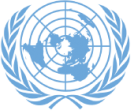ON THE AGENDA ITEM 25
28 October 2014
Mr. Chairman,
My delegation associates itself with the statement made by the delegation of Bolivia on behalf of Group of 77 and China on issues related to agriculture development, food security and nutrition.
As seen from the Secretary-General’s report (A/69/279), while the number of people in the world who suffer from chronic hunger has decreased by 17 percent since 1990, still one in eight remains chronically undernourished today. Hence, the need to redouble global action to meet MDG target on hunger and address hunger and poverty eradication as a priority in the post-2015 development agenda. In this regard, my delegation welcomes the inclusion of a stand-alone goal to “end hunger, achieve food security and improved nutrition, and promote sustainable agriculture” in the report of OWG on SDGs.
Mr. Chairman,
Agriculture development and food security remain high on the agenda of the Government of Mongolia.
Agricultural and food industry policies are formulated within the national development priorities articulated in the State policy documents, including the MDG-based Comprehensive national development strategy (2008-2021), the Action Plan of the Government (2012-2016), the National program on food security (2009-2016) and the National program on livestock (2010-2021).
Today, the agricultural sector contributes about 16 percent of the total GDP, employes 32 percent of the labour force and makes approximately 14 percent of export revenues.
As a result of the third campaign to restore crop production (2008-2010), we have become self-sufficient in wheat and potatoes, and 55 percent self-sufficient in vegetable production. 80 percent of agricultural machinery was renewed and a good foundation for further rehabilitation was established. However, challenges persist, i.e. insufficient financial resources and technical expertise hamper sustainable agricultural production in addition to a growing season of only 3 months, high altitudes, extreme weather fluctuations, long winters and low precipitation and other factors.
Closer cooperation with private sector and NGOs, such as the Mongolian Farmers Association for Rural Reform and the National Association of Seabuckthorn Producers have led to not only promotion of crop farming and horticulture development, but also to poverty reduction in rural areas by creating new jobs and business opportunities.
Livestock production account for 77 percent of gross agricultural output. The Government has been taking a host of measures aimed at improving the herders’ livelihood. However, the agricultural sector, particularly livestock rearing is vulnerable to changing climatic conditions, including frequent occurrence of natural disasters.
Mr. Chairman,
In 2012 the Law on Food Supply was amended, and the Law on Food Security was endorsed by the Parliament of Mongolia.
The National Food Security Program (2009-2016) envisages re-focused interventions in close partnership with private sector to improve food self-reliance and to enhance food safety taking into account the traditional nomadic pastoral system in rural areas, extreme vulnerability of herders and farmers to climate change, isolation of many rural households and communities, high concentration of urban population and other relevant factors.
According to the 5th national progress report on MDGs issued in 2013, the national MDG target of reducing by six times, between 1990 and 2015, the proportion of people who suffer from malnutrition is likely to be achieved. Efforts include the decrease of the number of underweight children aged below five from 11.6 percent in 2000 to 2 percent (3,3 percent in 2010) in 2015, and the relevant targets on prevalence of stunting and wasting for children under 5.
Apart from malnutrition, a double burden of undernutrition and obesity is becoming an emerging issue. In this regard, we are looking forward to a new global framework designed to adequately address major nutrition challenges over the coming decades to be adopted at the Second International Conference on Nutrition to be held in Rome next month.
Mr. Chairman,
Last March Mongolia hosted the 32nd session of the FAO Regional Conference for Asia and the Pacific which resulted in the strong support for the implementation of FAO’s four regional initiatives on: Zero Hunger Challenge in Asia and the Pacific, Regional Rice Initiative, Blue Growth and Developing Local Value Chains for food security and nutrition in Pacific Island States.
The conference acknowledged that good progress has been made towards reducing hunger by half in the region, and that MDG1 per se could be within reach if countries redoubled their efforts and worked together in close partnership.
In closing, may I reiterate my delegation’s firm belief that with renewed political commitment, decisive national action and effective global partnership the vision of the hunger-free world could be also within our reach as we all gear to a transformative development agenda.
I thank you for your attention.


